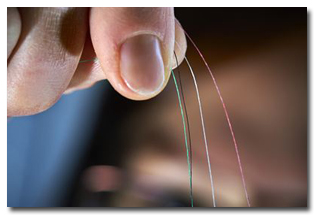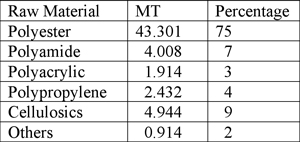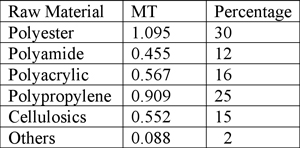The combination of strong design competence and cutting-edge cellulose-based technologies can
result in new commercially successful brands. The aim is for fibre from wood-based biomass to
replace both cotton production, which burdens the environment, and polyester production, which
consumes oil. A research project launched by VTT Technical Research Centre of Finland, Aalto
University and Tampere University of Technology aims to create new business models and ecosystems
in Finland through design-driven cellulose products.
The joint research project is called Design Driven Value Chains in the World of Cellulose
(DWoC). The objective is to develop cellulose-based products suitable for technical textiles and
consumer products. The technology could also find use in the pharmaceutical, food and automotive
industries. Another objective is to build a new business ecosystem and promote spin-offs.
The breakthrough for these new products and services is expected to take a few years.
State-of-the-art cellulose processing technologies could generate production value of up to EUR 2-3
billion in Finland’s forestry, textile and mechanical engineering industries, and in entirely new
business sectors.
This is one of two strategic projects launched by Tekes – Finnish Funding Agency for
Technology and Innovation intended to help transform Finnish business life. The project received
nearly EUR 3 million in funding from Tekes for the opening research stages in 2013-2015.

Designers Envision Consumer Products Of The Future
Aalto University students participate in the project by offering fresh new perspectives on
Finnish cellulose products.
“The research project provides an opportunity to use design methods to turn cellulose raw
material into products, services and business. Designers contribute to the project by introducing
an experimental method of creating prototypes, as well as the ability to visualise something that
doesn’t yet exist. This allows us to take consumer perspective into account at different stages of
the programme,” explains Professor Pirjo Kääriäinen from the Aalto University’s Department of
Design.
According to Kääriäinen, design as a strategic resource in the industry is so far relatively
untapped. As a working method, industrial design brings a user-focused perspective to the project,
opening new and unexplored opportunities for commercial use of the materials and for envisioning
new products. This work combines with the creation of business ecosystems in line with the
principles of sustainable development.
New materials and technologies are a source of inspiration to designers. The first sessions
with technology developers were filled with excitement and bursts of innovation. For researchers,
the notion of design needs affecting the material being created was particularly interesting.

New Technologies In Yarn Manufacture
Researchers seek to combine Finnish design competence with cutting-edge technological
developments to utilise the special characteristics of cellulose to create products that feature
the best qualities of materials such as cotton and polyester. Product characteristics achieved by
using new manufacturing technologies and nanocellulose as a structural fibre element include
recyclability and individual production.
The first tests performed by professor Olli Ilkkala’s team at the Aalto University showed
that the self-assembly of cellulose fibrils in wood permits the fibrils to be spun into strong
yarn.
VTT has developed an industrial process that produces yarn from cellulose fibres without the
spinning process. VTT has also developed efficient applications of the foam forming method for
manufacturing materials that resemble fabric.
“In the future, combining different methods will enable production of individual fibre
structures and textile products, even by using 3D printing technology,” says Professor Ali Harlin
from VTT.
Usually the price of a textile product is the key criterion even though produced sustainably.
New methods help significantly to shorten the manufacturing chain of existing textile products and
bring it closer to consumers to respond to their rapidly changing needs. Projects are currently
under way where the objective is to replace wet spinning with extrusion technology. The purpose is
to develop fabric manufacturing methods where several stages of weaving and knitting are replaced
without losing the key characteristics of the textile, such as the way it hangs.
Finland’s Logging Residue To Replace Environmentally Detrimental Cotton
Cotton textiles account for about 40% of the world’s textile markets, and oil-based polyester
for practically the remainder. Cellulose-based fibres make up 6% of the market. Although cotton is
durable and comfortable to wear, cotton production is highly water-intensive, and artificial
fertilisers and chemical pesticides are often needed to ensure a good crop. The surface area of
cotton-growing regions globally equates to the size of Finland.
Approximately 5-6 million tons of fibre could be manufactured from Finland’s current logging
residue (25-30 million cubic metres/year). This could replace more than 20% of globally produced
cotton, at the same time reducing carbon dioxide emissions by 120-150 million tons, and releasing
enough farming land to grow food for 18-25 million people. Desertification would also decrease by
approximately 10 per cent.
Posted October 8, 2013
Source: VTT Technical Research Centre of Finland







